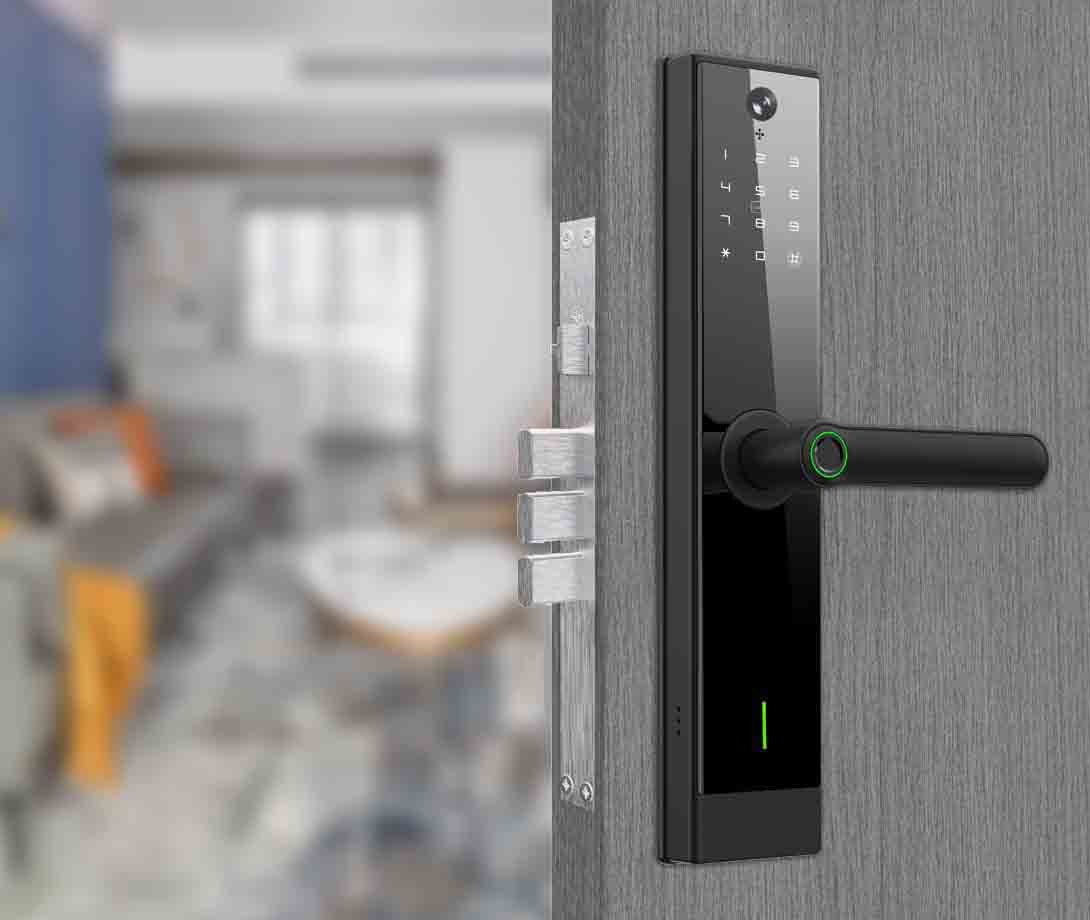Are Smart Locks Safer Than Traditional Key Locks?
For centuries, traditional key locks were the gold standard for home security. Today, smart locks promise keyless convenience with enhanced protection – but are they truly safer? This in-depth analysis compares both systems across critical security factors to help you make an informed decision.
Section 1: Physical Security Comparison
1.1 Tamper Resistance
Traditional Key Locks:
- Vulnerable to lock picking (average burglars take <60 seconds)
- Susceptible to bump keys and impressioning
- Can be drilled or forced with physical tools
Smart Locks:
- No exposed keyhole eliminates picking threats
- Reinforced metal bodies resist drilling
- Many have built-in tamper alarms
Verdict: Smart locks win for physical tamper resistance
1.2 Durability Testing
Independent tests show:
- High-end deadbolts withstand 10+ minutes of attack
- Smart locks like Yale Assure survive 15+ minutes of sustained prying
- Both types fail similarly against angle grinders
Key Insight: Quality matters more than type – a
30smartlockwon′toutperforma200 mechanical deadbolt
Section 2: Access Control & Authorization
2.1 Unauthorized Access Risks
Key Locks:
- Lost/stolen keys create permanent vulnerabilities
- Impossible to track who entered or when
- Key copying costs just $2 at hardware stores
Smart Locks:
- Temporary digital keys expire automatically
- Entry logs show exact access times and users
- Biometric options (fingerprint) can’t be duplicated
2.2 Authorization Management
Smart locks enable:
- Remote access revocation in real-time
- Scheduled access windows (e.g., for cleaners 9AM-11AM)
- Tiered permission levels (admin/user/guest)
Security Advantage: Eliminates the “changed the locks but forgot who has copies” problem
Section 3: Digital Security Considerations
3.1 Cybersecurity Threats
Potential smart lock vulnerabilities:
- Bluetooth spoofing (fixed in BLE 4.2+)
- Wi-Fi network breaches
- App security flaws
Protection Measures:
- Always enable 2FA
- Use locks with AES-256 encryption
- Regular firmware updates
3.2 Failure Modes
Both systems have failure points:
- Smart locks: Power/battery failure
- Key locks: Mechanical jams
Critical Difference: Quality smart locks include:
- Backup power options (9V battery terminals)
- Automatic alerts for low batteries
- Mechanical override keys (dual-security)
Section 4: Real-World Security Performance
4.1 Burglary Statistics
- 34% of burglars enter through front doors (FBI 2022)
- Homes with visible smart security see 300% fewer break-in attempts
- However, 7% of smart lock owners report access issues vs. 2% for key locks
4.2 Insurance Implications
- Many insurers offer 5-15% discounts for smart locks
- Some require UL 437 security certification (found in high-end models)
- Always verify lock meets your policy requirements
Section 5: User Behavior & Security
5.1 Common Security Mistakes
Key Lock Users:
- Hiding keys in predictable spots (63% under doormats)
- Never rekeying after losing keys
- Using cheap locks from big-box stores
Smart Lock Users:
- Weak/default PIN codes (1234 remains most common)
- Not enabling available security features
- Poor network security (using default router passwords)
5.2 Best Practice Recommendations
For Maximum Security:
- Choose locks with BHMA Grade 1 certification
- Enable all available authentication methods
- Use unique 6+ digit PINs
- Pair with security cameras for verification
- Conduct monthly access audits
Section 6: Special Use Cases
6.1 Rental Properties
Smart locks enable:
- Automatic tenant turnover (no rekeying costs)
- Remote access management for Airbnb hosts
- Custom access schedules for maintenance workers
Security Win: Eliminates unauthorized key copying
6.2 High-Security Needs
For extreme security:
- Mul-T-Lock MT5+ mechanical keys (virtually unpickable)
- CyberLock electronic systems (used in government facilities)
- Dual-authentication smart locks (fingerprint + PIN)
Expert Tip: Layered security works best – combine smart locks with reinforced strike plates
Conclusion: Which Is Truly Safer?
After examining all factors:
Smart locks are generally safer when:
Properly configured with strong authentication
Paired with a secure home network
Using high-quality, certified models
Traditional keys may be preferable when:
Power reliability is questionable
Users struggle with technology
Budget only allows for low-end smart locks
Final Recommendation: Invest in a BHMA Grade 1 certified smart lock from reputable brands for optimal security. Always maintain mechanical backup options and practice good digital hygiene.
Remember – the most secure lock is only as strong as its weakest component, whether that’s a flimsy door frame, predictable PIN, or hidden spare key under the flowerpot.
Post time: May-23-2025


